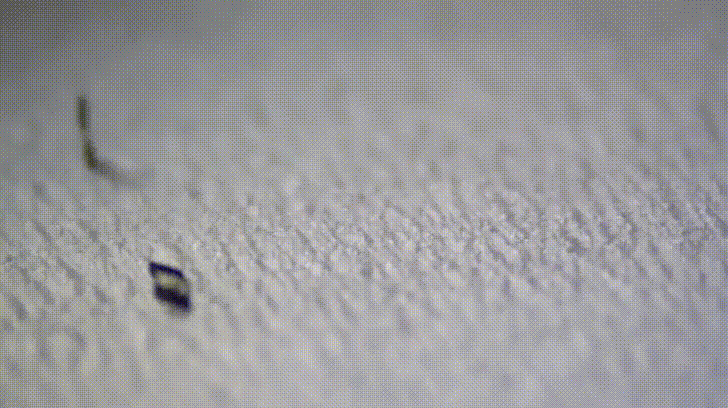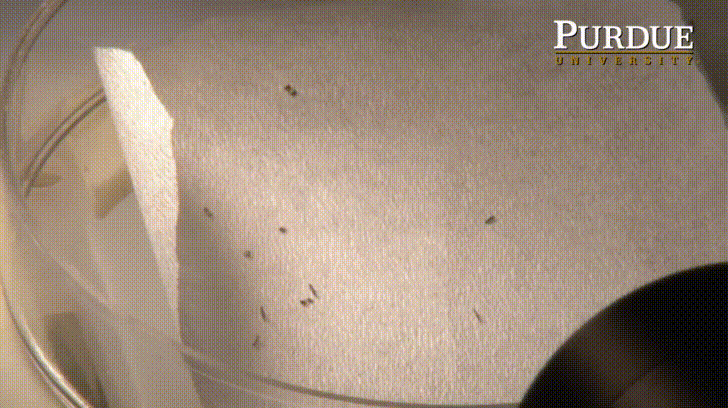Earlier this week, the robotics company Boston Dynamics released a clip of their BigDog model—a four-legged, gas-powered, mobile machine—dexterously opening a door for its buddy. In light of the recent Black Mirror episode “Metalhead,” which features a similar dogbot equipped with a deadly arsenal, it’s understandably chilling to behold Boston Dynamics’ creations and their impressive abilities.But the collective freakout over the canine door openers overshadowed another robot video, dropped by Purdue University’s School of Mechanical Engineering on Tuesday, which might actually outcreep the Boston Dynamics clip.In contrast to the BigDogs, Purdue’s “microscale magnetic tumbling robots,” or microTUMs, are extremely small, measuring about 400 by 800 microns—about the size of a grain of sand. Shaped like dumbbells, the tiny machines are outfitted with magnetic end caps, enabling them to “tumble” continuously over a variety of terrains, powered by a shifting magnetic field. So in case you were wondering what’s more frightening than large robots that open doors, the answer is microbots that can tumble under them in swarms. Wherever you are, these little bots will be able to squeeze past most any barrier and traverse most any landscape to reach you (and yes, there is a Black Mirror episode for that variety of nightmare too).
So in case you were wondering what’s more frightening than large robots that open doors, the answer is microbots that can tumble under them in swarms. Wherever you are, these little bots will be able to squeeze past most any barrier and traverse most any landscape to reach you (and yes, there is a Black Mirror episode for that variety of nightmare too). Your hackles might be raised even further once you learn that this Purdue study, led by graduate student Chenghao Bi and published in the journal Micromachines, proposes injecting these microTUMs into the human body.Rest assured, though, that the team is not trying to pull some kind of Magic School Bus stunt. Instead, Purdue engineers hope to use the bots as a targeted drug delivery vector, with biomedical payloads packed onto the central module and directed to a specific location within the body, allowing for more precise medical treatments.
Your hackles might be raised even further once you learn that this Purdue study, led by graduate student Chenghao Bi and published in the journal Micromachines, proposes injecting these microTUMs into the human body.Rest assured, though, that the team is not trying to pull some kind of Magic School Bus stunt. Instead, Purdue engineers hope to use the bots as a targeted drug delivery vector, with biomedical payloads packed onto the central module and directed to a specific location within the body, allowing for more precise medical treatments.
Advertisement
“We envision these robots being injected into the patient inside the body, in complex sticky terrains like tissue,” said study co-author David Cappelleri, director of Purdue’s Multi-Scale Robotics and Automation Lab, in the video. “You could imagine these robots maybe being in the stomach somewhere [tumbling] to their goal location, where they need to be.”Now to answer the obvious question: Would you rather fight one BigDog-sized microTUM, or 100 microTUM-sized BigDogs?Get six of our favorite Motherboard stories every day by signing up for our newsletter .Read More: Insect-Inspired Vision Helps These Tiny Robots Fly
